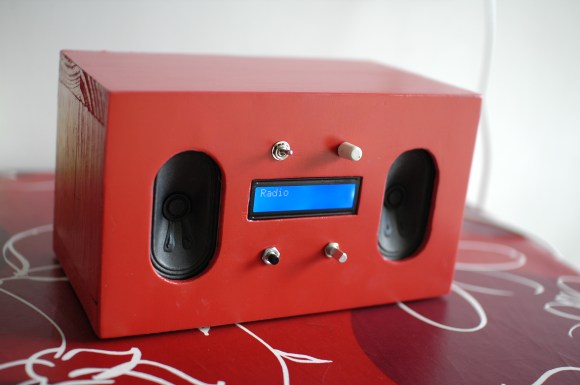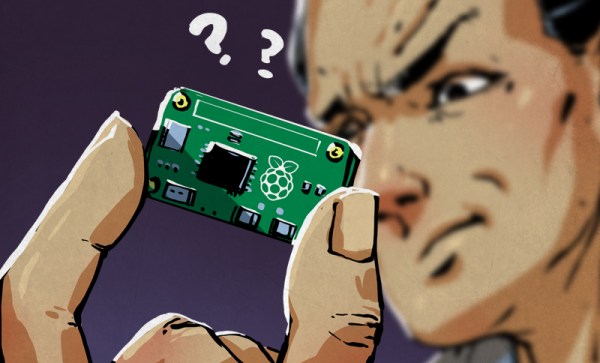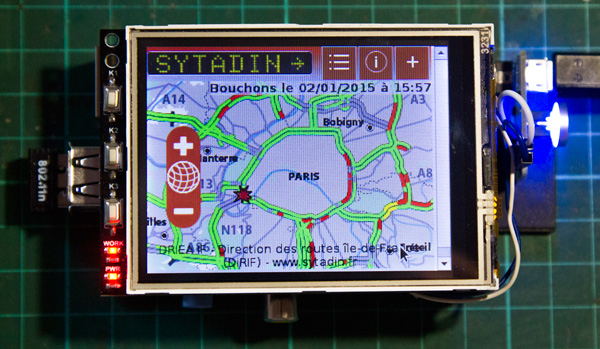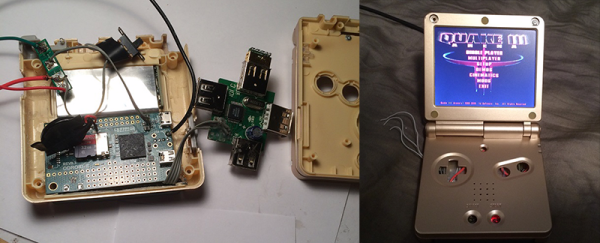I ordered a Raspberry Pi Zero from Adafruit in their Startup Pack right after they were released. There are a few Greater Than Zero Pis (GTZPi) already on my workbench so my purchase was driven by curiosity, not necessity. With no rush on delivery it eventually got here, and I finally got around to looking at it. My experience with the Pi family began with the Pi B+ and, shortly after that, the Pi 2. The speed difference between them was noticeable so I decided to dive in and further test the performance of the Zero.
Raspbian13 Articles
Dedicated Automobile Traffic Monitor With Raspberry Pi
[j3tstream] wanted an easier way to monitor traffic on the roads in his area. Specifically, he wanted to monitor the roads from his car while driving. That meant it needed to be easy to use, and not too distracting.
[j3tstream] figured he could use a Raspberry Pi to run the system. This would make things easy since he’d have a full Linux system at his disposal. The Pi is relatively low power, so it’s run from a car cigarette lighter adapter. [j3tstream] did have to add a custom power button to the Pi. This allows the system to boot up and shut down gracefully, preventing system files from being corrupted.
After searching eBay, [j3tstream] found an inexpensive 3.2″ TFT LCD touchscreen display that would work nicely for displaying the traffic data. The display was easy to get working with the Pi. [j3tstream] used the Raspbian linux distribution. His project page includes a link to download a Raspbian image that already includes the necessary modules to work with the LCD screen. Once the image is loaded, all that needs to be done is to calibrate the screen using built-in operating system functions.
The system still needed a data connection. To make things simple and inexpensive, [j3tstream] used a USB WiFi dongle. The Pi then connects to a WiFi hot spot built into his 4G mobile phone. To view the traffic map, [j3tstream] just connects to a website that displays traffic for his area.
The last steps were to automate as much as possible. After all, you don’t want to be fumbling with a little touch screen while driving. [j3tstream] made some edits to the LXDE autostart file. These changes automatically load a browser in full screen mode to the traffic website. Now when [j3tstream] boots up his Pi, it automatically connects to his WiFi hotspot and loads up local traffic maps.
The Smallest Portable Pi
What do you get when you take an extremely small Raspberry Pi clone and stuff it inside a Game Boy Advance SP? We don’t know what to call it, but it’s probably one of the best portable gaming machines ever made, able to run emulators ranging from the Apple II to playing Quake III natively on a tiny flip-top display.
This isn’t the first time we’ve seen [frostedfires]’ work on a tiny system stuffed into a Game Boy. The initial post on this build over on the bacman forums just covered the basics – getting an Odroid W up and running, and putting Quake III on the tiny display. Now that the build is complete, we can get a look at what it takes to turn a Raspberry Pi clone into one of the smallest portable projects we’ve ever seen.
Using a Raspi clone as the only component in a tiny portable emulation station isn’t possible, so [frostefires] added a few other bits of electronics to make everything work. There’s a joystick from a PSP in there to work as the mouse, a few extra buttons in addition to the stock Game Boy ones, A USB hub, WiFi adapter, speaker and amplifier, a battery and the related charging electronics, and a Teensy 3.1 to handle all the input.
It’s a very impressive build that can run emulators ranging from the Apple II to later generation Nintendo consoles and handhelds (including the Game Boy Advance), but since the HDMI connector is availble on the outside of the case, [frostedfires] can also use this as a tiny, portable media center. Check out the video below to see this Game Boy in action, playing Mario Kart and 1080p video.
Using A Raspberry Pi To Give Your Car More Features
[Andrei] is cruising in style thanks to his Raspi-powered CarPC project, which is a steal at $200 considering all the functionality it provides. This is an update to the work we saw from him back in March. Rather than completely replace his car’s head unit, [Andrei] simply relocated it to the trunk, permanently set it to the “aux input” source, and connected the Raspberry Pi’s audio output. The Pi runs a Raspbian Wheezy distro with XBMC and is mounted in the storage area beneath the middle armrest. [Andrei] filled the hole left by the old stereo with a 7-inch touchscreen display, which connects to the Pi through both HDMI and USB. If you throw the car into reverse, the Pi automatically selects the touchscreen’s AV input to display the car’s backup camera, then flips back when put in drive.
The unit also provides navigation via the open-source Navit software using OpenStreetMap data. An ST22 SkyTraq GPS receiver grabs coordinates and feeds them into the Raspi, which updates the on-screen map once per second. You’ll want to watch the video after the break (Audio Warning: Tupac) to see for yourself just how well the CarPC came together,
Continue reading “Using A Raspberry Pi To Give Your Car More Features”
SqueezeBerry: A Raspberri Pi Powered Squeezebox Appliance

We like the look which [Emmanuel] achieved with his Raspberry Pi based Squeezebox client. It’s got that minimalist slant that makes it seem like a commercial product at first glance. But one more look at the speakers without grates, the character LCD, and the utilitarian buttons, knobs, and switches tips us off that it’s filled with the hardware we know and love.
Since Logitech announced that it was terminating the Squeezebox line we’ve seen several projects which take up the torch. We’ve seen the RPi used as a Squeezebox server and several embedded Linux systems used as clients. This follows in the footsteps of the latter. The RPi is running Raspbian with the squeezelite package handling the bits necessary to talk to his server. The controls on the front include a power switch, rotary encoder and button for navigating the menus, and a potentiometer to adjust the HD44780 LCD screen’s contrast. The speakers are a set of amplified PC speakers that were liberated from their cases and mounted inside of the wooden box that makes up the enclosure. The in-progress shots of that case look pretty rough, but some sanding and painting really pulled everything together. As you would expect, we’ve embedded the demo video after the jump.
Continue reading “SqueezeBerry: A Raspberri Pi Powered Squeezebox Appliance”
OpenGL On The Raspi

Perhaps we’ve been concentrating too much on the hardware side of the Raspberry Pi. Sure, connecting the Raspi to the outside world through GPIO pins is cool, but let’s not forget we’re dealing with a full-fledged Linux box here. [chris] is doing his best to keep us in check with by bringing the power of OpenGL graphics to the Raspberry Pi.
Previously, OpenGL ES was only available for xorg but [chris] successfully added support for Raspbian. There’s a great physics demo [chris] put together showing off 128 spheres and cubes bouncing around a plane.
Right now, [chris] is looking for people to contribute samples and tutorials for making accelerated 3D graphics on the Raspi. You can grab all the code over at [chris]’ Git and contact him over on the Raspberry Pi forums if you’d like to help out.
As with any graphics demo, check out the videos after the break.














